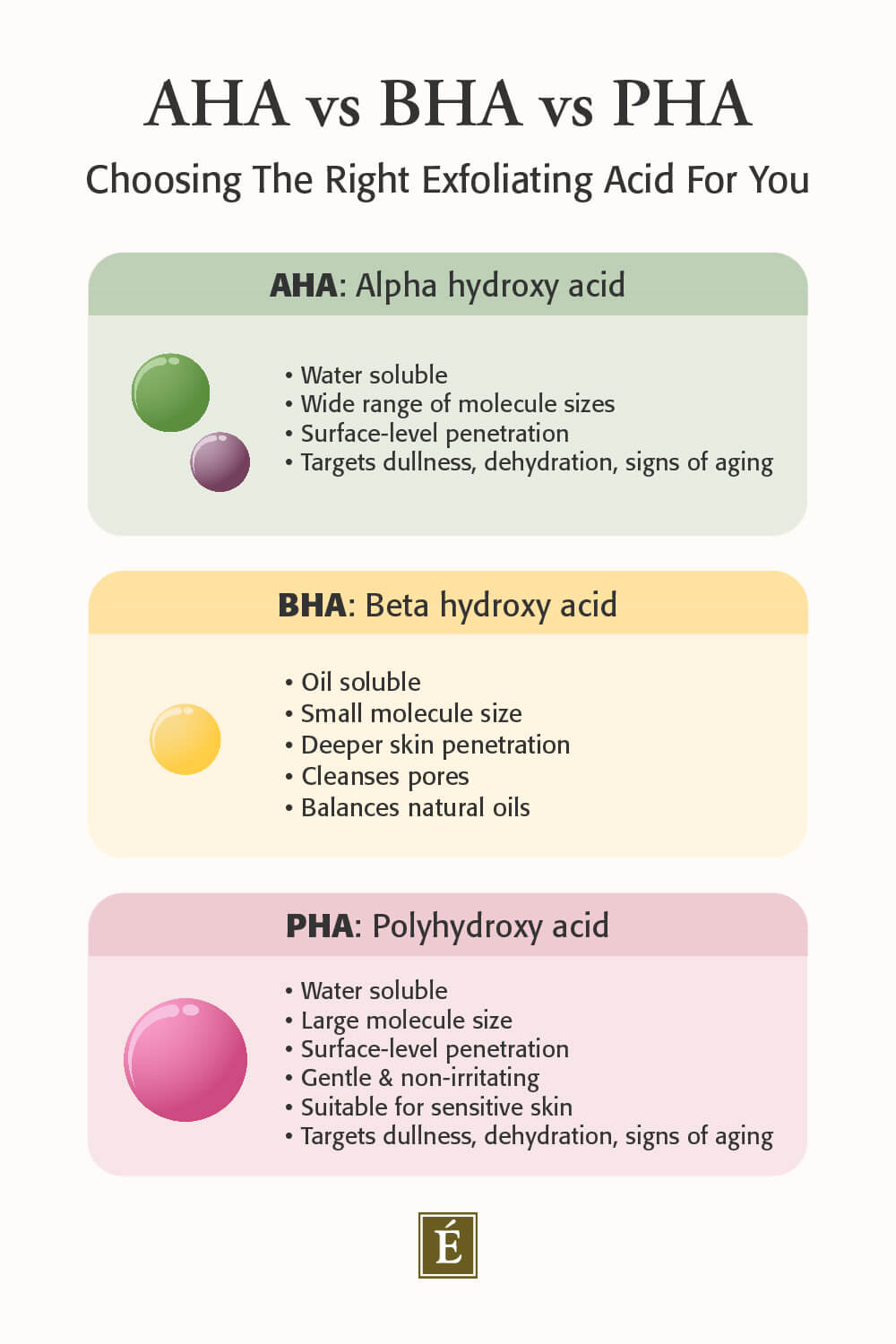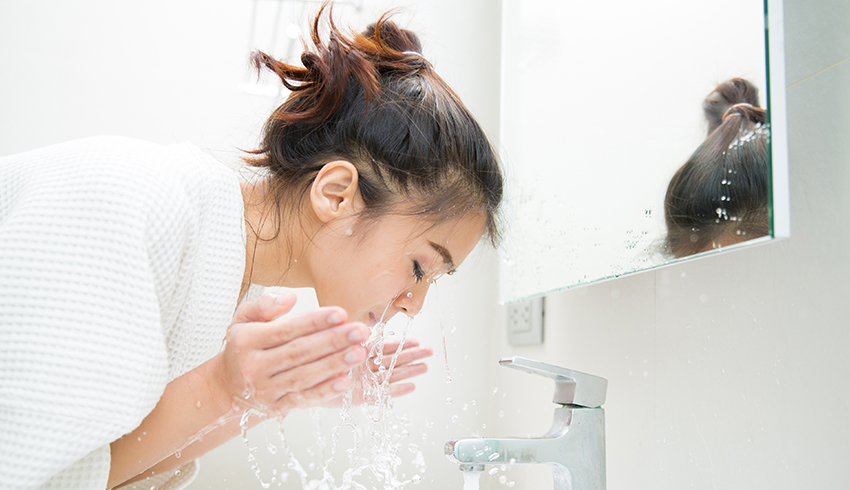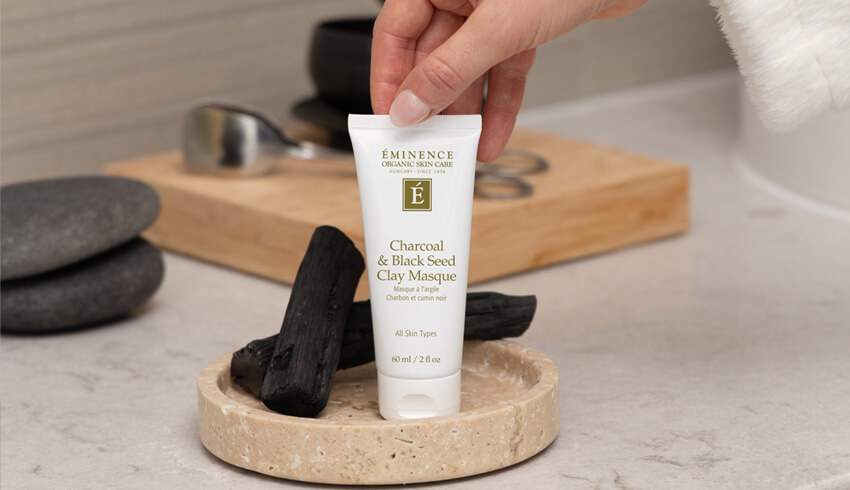
Just like us, you probably have a deep appreciation for acids due to their power to resurface and enhance the skin's natural glow. Exfoliating acids, such as AHAs and BHAs, have been a staple for those seeking to rejuvenate their skin by removing dead skin cells and revealing a brighter, more radiant complexion. These types of acids are among the most widely used exfoliants. Adding to these acids is the new kid on the block: PHA, and it's been garnering attention for its ability to illuminate the skin without irritating those with sensitive, reactive skin. Keep reading to learn all about the differences between AHAs, PHAs and BHAs to determine which acid is most suited to your skin type.
Key Takeaways:
- Different Exfoliating Properties: AHAs, PHAs, and BHAs are chemical exfoliants that help in removing dead skin cells to promote newer, smoother skin. AHAs work on the surface, while BHAs go deeper to clear pores, and PHAs are gentler and suitable for sensitive skin.
- Skin Benefits: These acids aid in improving skin texture, reducing signs of aging like fine lines and uneven skin tone, and managing acne through deep pore cleansing.
- Choosing the Right Acid: The choice between AHAs, PHAs and BHAs depends on skin type and concerns — AHAs for dry skin, BHAs for oily and acne-prone skin and PHAs for sensitive skin.
What Are AHAs, PHAs & BHAs?
One of the most effective ways to improve your skin’s radiance and smoothness is encouraging skin cell turnover to make way for new, younger cells. Dead skin cells that linger on the complexion leave skin looking dull. Ideally, your skin will naturally shed these cells but as we age, this natural process slows down, so our skin doesn’t renew itself as frequently. AHAs, PHAs and BHAs are exfoliating ingredients that work by breaking down the bonds that keep dead skin cells clinging to the skin’s surface, bringing out new, fresher-looking skin. You can find these ingredients in exfoliants as well as toners, cleansers and even body oils. But, what exactly is the difference between these three acids?

AHAs Explained
Alpha hydroxy acids (AHAs) help with the skin's exfoliation process by breaking down the "glue" that holds dead skin cells to the surface, which encourages the cells to turn over more quickly. There are many different types of AHAs that you can use, depending on your needs. You may have heard of mandelic acid, glycolic acid, lactic acid, ferulic acid and more. Out of all these different types, lactic acid is the most gentle and hydrating of AHAs, meaning it is an excellent choice for most skin types and is less likely to cause irritation.
AHAs are water soluble, meaning they are unable to penetrate through the skin’s natural oils. As a result, AHAs are used for exfoliating the surface of the skin and target dryness, dullness and the signs of aging such as fine lines and wrinkles. You can read all about AHA in further detail here.
All About PHAs
Polyhydroxy acids (PHAs) are gentle chemical acids that are related to AHAs. Common types of PHAs include gluconolactone and lactobionic acid. Similar to AHAs, PHAs are water soluble and do not penetrate the skin’s oils, meaning they exfoliate on the skin’s outer surface. However, PHAs are unique in that they offer a more gradual exfoliation which makes this acid non-irritating, even for sensitive skin types. There are no risks of harsh side effects like dryness or sensitivity. PHAs also exhibit a strong ability to protect from environmental stressors that cause dryness as well as visible signs of aging, such as fine lines and wrinkles. PHAs help with hydration and smooth the skin, making it a suitable ingredient for dry skin types too.
What Are BHAs?
Similar to AHAs and PHAs, BHAs dissolve the bonds between dead skin cells on the skin's surface. However, unlike the other two acids, oil-soluble BHAs can penetrate more deeply to reach the oil glands and penetrate blocked pores. This acid can break down skin cell buildup that may trigger breakouts, making it ideal for acne-prone skin.
The most common BHA in the beauty world is salicylic acid, which reduces the likelihood of breakouts and keeps it looking blemish-free. BHAs can also address an uneven skin texture, fine lines and wrinkles.
Difference Between AHAs, PHAs & BHAs
By using AHA, PHA or BHA exfoliating products, you can clear away rough, dry skin and bring back a healthy-looking glow. But there are a few differences.
People with non-sensitive, dry and rough skin will benefit the most from AHAs, while those with oily skin or acne-prone skin will see the most improvement from BHAs. BHAs are able to clear blockages and eliminate bacteria that are lingering inside the pore by penetrating deeply. PHAs, on the other hand, are unlike the other two acids. PHAs offer gradual penetration, making this type the ideal choice for those with sensitive skin.
Understanding which acids are most suitable for your skin type can help you achieve your skin care goals as quickly as possible! Learn more about these acids by talking to an esthetician at your favorite Eminence Organics Spa Partner and find out which acid is the right choice for you.


